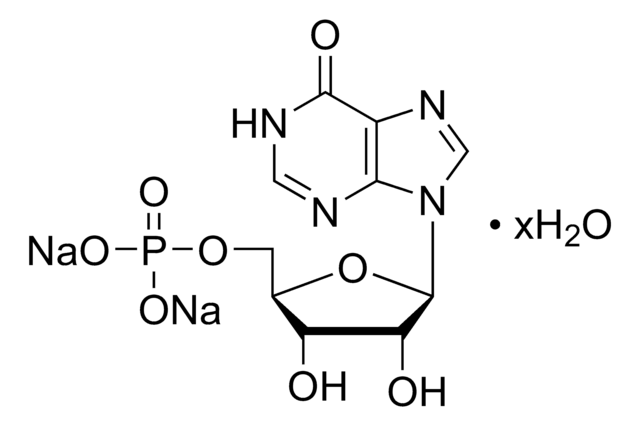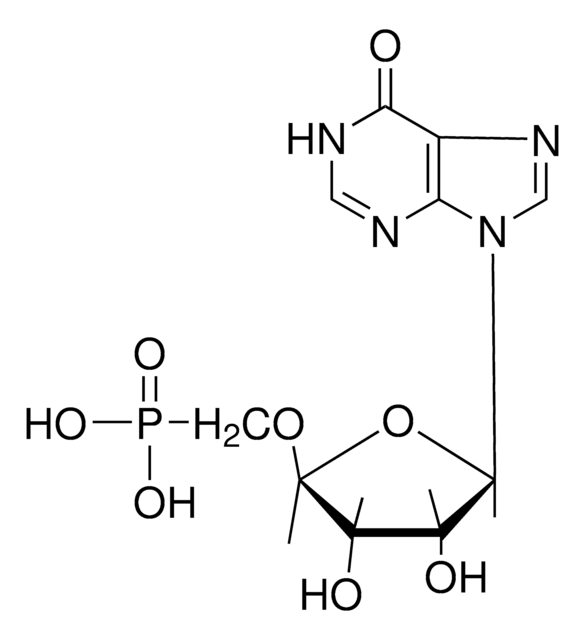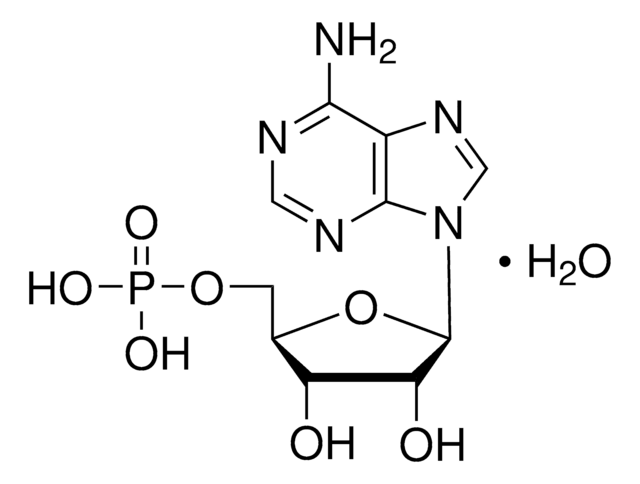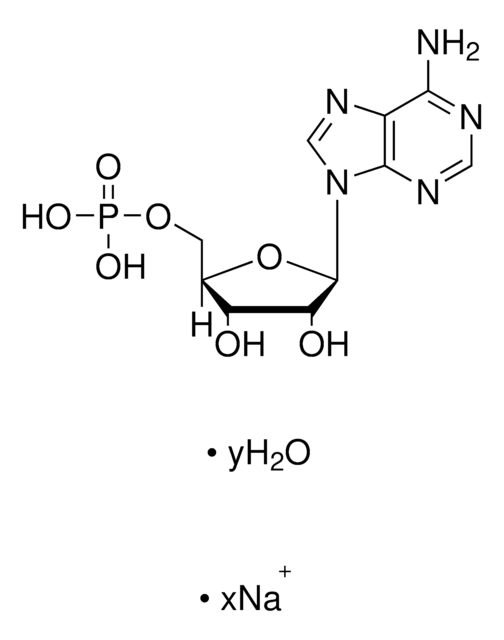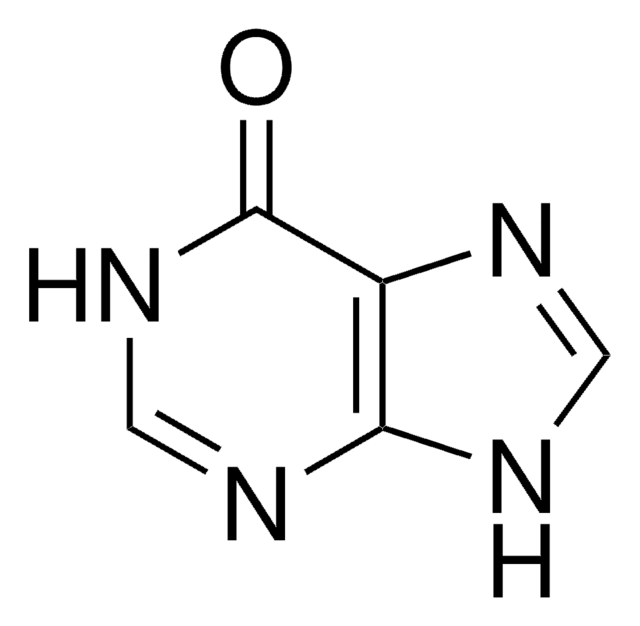PHR1475
Disodium Inosinate
Pharmaceutical Secondary Standard; Certified Reference Material
Synonym(s):
Inosine 5′-monophosphate disodium salt hydrate, 5′-IMP-Na2, 5′-Inosinic acid disodium salt hydrate, I-5′-P, IMP, Inosinic Acid
About This Item
Recommended Products
grade
certified reference material
pharmaceutical secondary standard
Quality Level
Agency
traceable to USP 1222002
API family
disodium inosinate
CofA
current certificate can be downloaded
packaging
pkg of 1 g
technique(s)
HPLC: suitable
gas chromatography (GC): suitable
application(s)
pharmaceutical (small molecule)
format
neat
storage temp.
2-8°C
SMILES string
[Na+].[Na+].O[C@H]1[C@@H](O)[C@@H](O[C@@H]1COP([O-])([O-])=O)n2cnc3C(=O)NC=Nc23
InChI
1S/C10H13N4O8P.2Na.H2O/c15-6-4(1-21-23(18,19)20)22-10(7(6)16)14-3-13-5-8(14)11-2-12-9(5)17;;;/h2-4,6-7,10,15-16H,1H2,(H,11,12,17)(H2,18,19,20);;;1H2/q;2*+1;/p-2/t4-,6-,7-,10-;;;/m1.../s1
InChI key
KQCIGEIXDXQSGM-MSQVLRTGSA-L
Looking for similar products? Visit Product Comparison Guide
General description
Application
Biochem/physiol Actions
Analysis Note
Other Notes
Footnote
related product
Storage Class Code
11 - Combustible Solids
WGK
WGK 3
Flash Point(F)
Not applicable
Flash Point(C)
Not applicable
Choose from one of the most recent versions:
Certificates of Analysis (COA)
Sorry, we don't have COAs for this product available online at this time.
If you need assistance, please contact Customer Support.
Already Own This Product?
Find documentation for the products that you have recently purchased in the Document Library.
Customers Also Viewed
Our team of scientists has experience in all areas of research including Life Science, Material Science, Chemical Synthesis, Chromatography, Analytical and many others.
Contact Technical Service